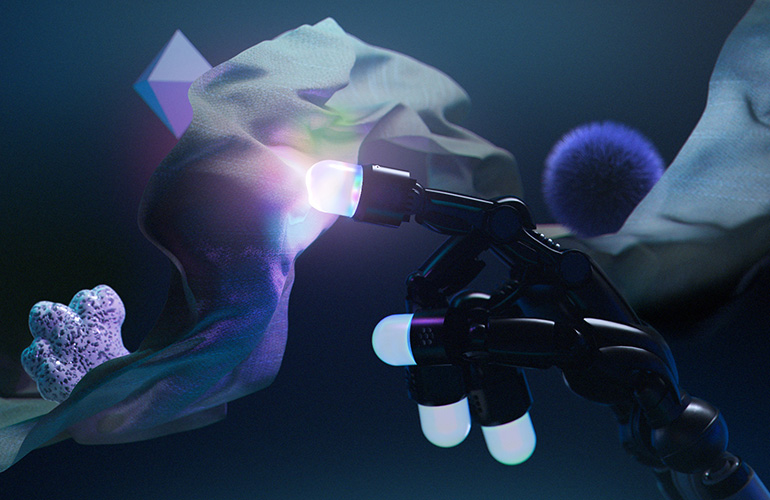Listen to this article


Digit 360 uses GelSight’s tactile sensing technology for high sensitivity and micron-level resolution. | Source: Meta AI
GelSight, a developer of tactile technology, and Meta AI announced Digit 360, a tactile sensor for robotic fingers. This signifies the next stage of the partnership between the companies, which was established in 2021 with the launch of the Digit tactile sensor.
Digit 360 is equipped with more than 18 sensing features. The companies said these will enable advancements in touch perception research and allow researchers to either combine its various sensing technologies or isolate individual signals for in-depth analysis of each modality.
This new tactile-specific optical lens can see the imprints all around the artificial fingertip, capturing more sensitive details about the surface touching the object.
“GelSight and Meta AI share the same vision to make tactile sensing more ubiquitous and accessible,” said Youssef Benmokhtar, CEO, GelSight. “Digit 360 will advance the digitization of touch and unlock new applications in robotics with its ability to capture omnidirectional deformations on the fingertip surface.”
GelSight is a developer of imaging-based tactile intelligence. The company’s proprietary technology was invented at the Massachusetts Institute of Technology. It provides detailed and rapid surface characterization, enabling several surface measurement applications and robotic sensing capabilities.
GelSight said its elastomeric 3D imaging systems are currently used in aerospace, automotive, forensics, and robotics research labs worldwide.
Digit 360 uses optics for a sense of touch
Digit 360 can see the imprints all around the artificial fingertip, the teams said, capturing more sensitive details about the surface touching the object. Over time, researchers can use Digit 360 to develop AI that can better understand and model the real world, including the physicality of objects, human-object interaction, and contact physics. Digit 360 can detect miniature changes in spatial details and capture forces as small as 1 millinewton.
GelSight’s elastomeric and imaging-based tactile sensing digitizes the sense of touch, enabling robotic engineers to develop solutions for the analysis of any surface regardless of material type or reflectivity, complex object manipulation, and many other dexterous tasks.
Beyond advancing robot dexterity, GelSight said Digit 360 has potential applications in medicine, prosthetics, virtual reality, telepresence, and more. For virtual worlds, Digit 360 can help better ground virtual interactions with the environment to more realistic representations of object properties beyond their visual appearances. Meta AI said it will open-source all code and designs developed using Digit 360.
Meta AI integrates sensors and AI
Meta AI also partnered with South Korea-based Wonik Robotics to develop the Allegro Hand. The company said this will be a fully integrated robotic hand with tactile sensors.
Building on the Meta Digit Plexus platform, the next generation of Allegro Hand could help advance robotics research by making it easier for researchers to conduct experiments. Wonik Robotics will manufacture and distribute the Allegro Hand, which will be made available next year.
“Wonik Robotics and Meta FAIR aim to introduce robotic hands to global companies, research institutes, and universities so they can continue developing robotic hand technology that is safe and helpful to humankind,” said Dr. Yonmook Park, executive director and the head of future technology headquarters at Wonik Robotics.






GIPHY App Key not set. Please check settings